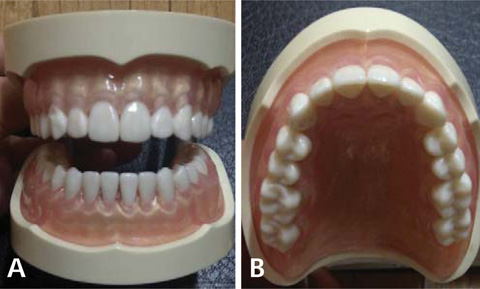Imaging Sci Dent.
2012 Jun;42(2):71-75. 10.5624/isd.2012.42.2.71.
Optimal protocol for teleconsultation with a cellular phone for dentoalveolar trauma: an in-vitro study
- Affiliations
-
- 1Department of Advanced General Dentistry, College of Dentistry, Yonsei University, Seoul, Korea.
- 2Department of Advanced General Dentistry and Human Identification Research Center, College of Dentistry, Yonsei University, Seoul, Korea. kdkim@yuhs.ac
- KMID: 1974411
- DOI: http://doi.org/10.5624/isd.2012.42.2.71
Abstract
- PURPOSE
Dental trauma is frequently unpredictable. The initial assessment and urgent treatment are essential for dentists to save the patient's teeth. Mobile-phone-assisted teleconsultation and telediagnosis for dental trauma could be an aid when a dentist is not available. In the present in-vitro study, we evaluated the success rate and time to transfer images under various conditions.
MATERIALS AND METHODS
We analyzed the image quality of cameras built into mobile phones based on their resolution, autofocus, white-balance, and anti-movement functions.
RESULTS
The image quality of most built-in cameras was acceptable to perform the initial assessment, with the autofocus function being essential to obtain high-quality images. The transmission failure rate increased markedly when the image size exceeded 500 kappaB and the additional text messaging did not improve the success rate or the transmission time.
CONCLUSION
Our optimal protocol could be useful for emergency programs running on the mobile phones.
MeSH Terms
Figure
Cited by 1 articles
-
Clinical usefulness of teleradiology in general dental practice
Jin-Woo Choi
Imaging Sci Dent. 2013;43(2):99-104. doi: 10.5624/isd.2013.43.2.99.
Reference
-
1. Gassner R, Tuli T, Hachl O, Moreira R, Ulmer H. Craniomaxillofacial trauma in children: a review of 3,385 cases with 6,060 injuries in 10 years. J Oral Maxillofac Surg. 2004. 62:399–407.
Article2. Andersson L, Malmgren B. The problem of dentoalveolar ankylosis and subsequent replacement resorption in the growing patient. Aust Endod J. 1999. 25:57–61.
Article3. Ebner C, Wurm EM, Binder B, Kittler H, Lozzi GP, Massone C, et al. Mobile teledermatology: a feasibility study of 58 subjects using mobile phones. J Telemed Telecare. 2008. 14:2–7.
Article4. Kim DK, Yoo SK, Kim SH. Instant wireless transmission of radiological images using a personal digital assistant phone for emergency teleconsultation. J Telemed Telecare. 2005. 11:Suppl 2. S58–S61.
Article5. Yamada M, Watarai H, Andou T, Sakai N. Emergency image transfer system through a mobile telephone in Japan: technical note. Neurosurgery. 2003. 52:986–990.
Article6. Kopycka-Kedzierawski DT, Billings RJ. Teledentistry in inner-city child-care centres. J Telemed Telecare. 2006. 12:176–181.
Article7. Nickenig HJ, Wichmann M, Schlegel A, Eitner S. Use of telemedicine for pre-implant dental assessment-a comparative study. J Telemed Telecare. 2008. 14:93–97.8. Park W, Kim DK, Kim JC, Kim KD, Yoo SK. A portable dental image viewer using a mobile network to provide a tele-dental service. J Telemed Telecare. 2009. 15:145–149.
- Full Text Links
- Actions
-
Cited
- CITED
-
- Close
- Share
- Similar articles
-
- Middle School Students' Addicted Use of Celluar Phone and their Psychosocial Characteristics
- Two Cases of Cellular Phone Dermatitis
- Missing teeth after maxillofacial trauma:a case report and management protocol
- Influence of Cellular Phone Videos and Games on Dry Eye Syndrome in University Students
- Effects of Internet Diabetic Education on Blood Glucose in Hyperglycemic Patients




